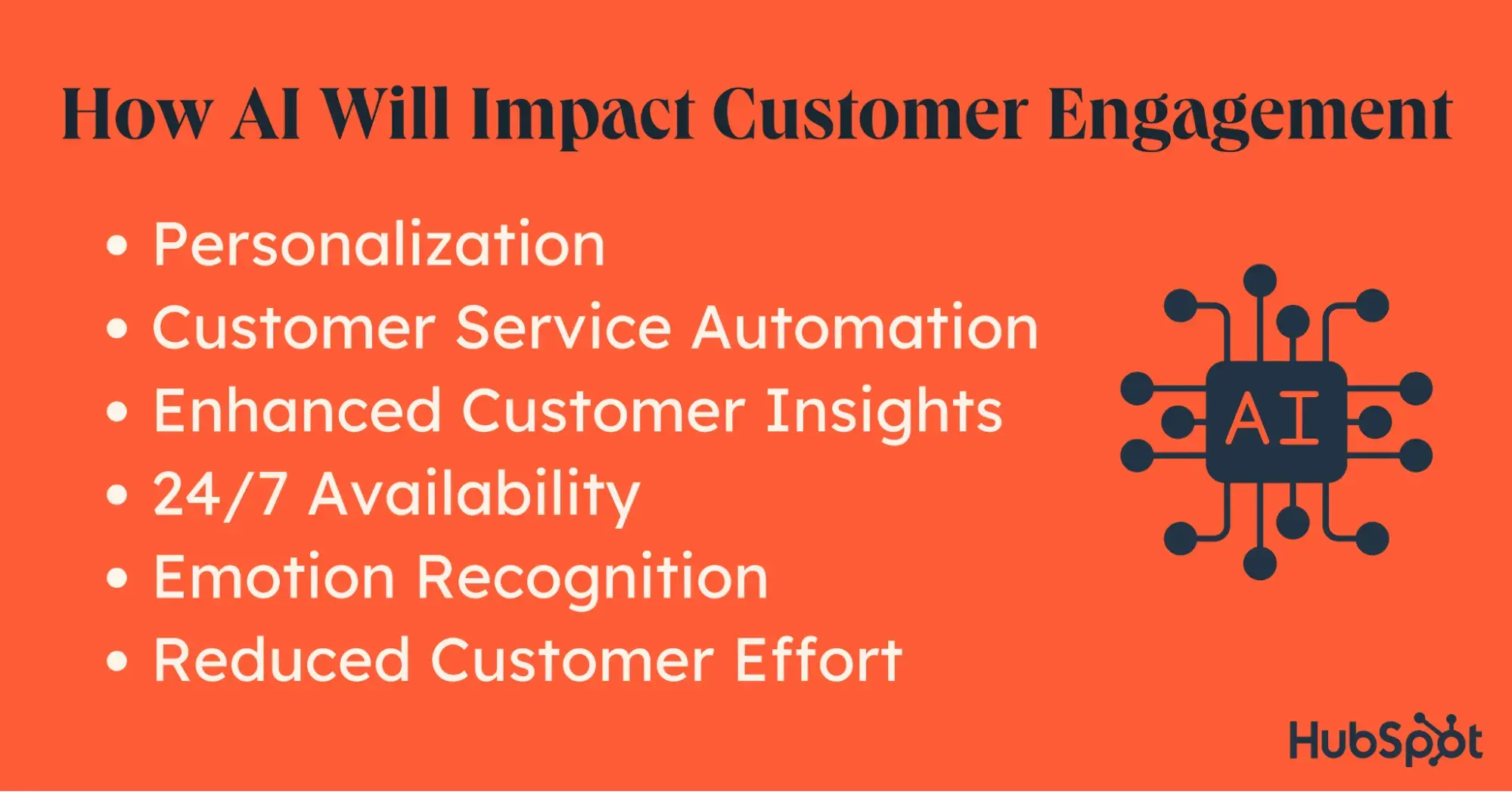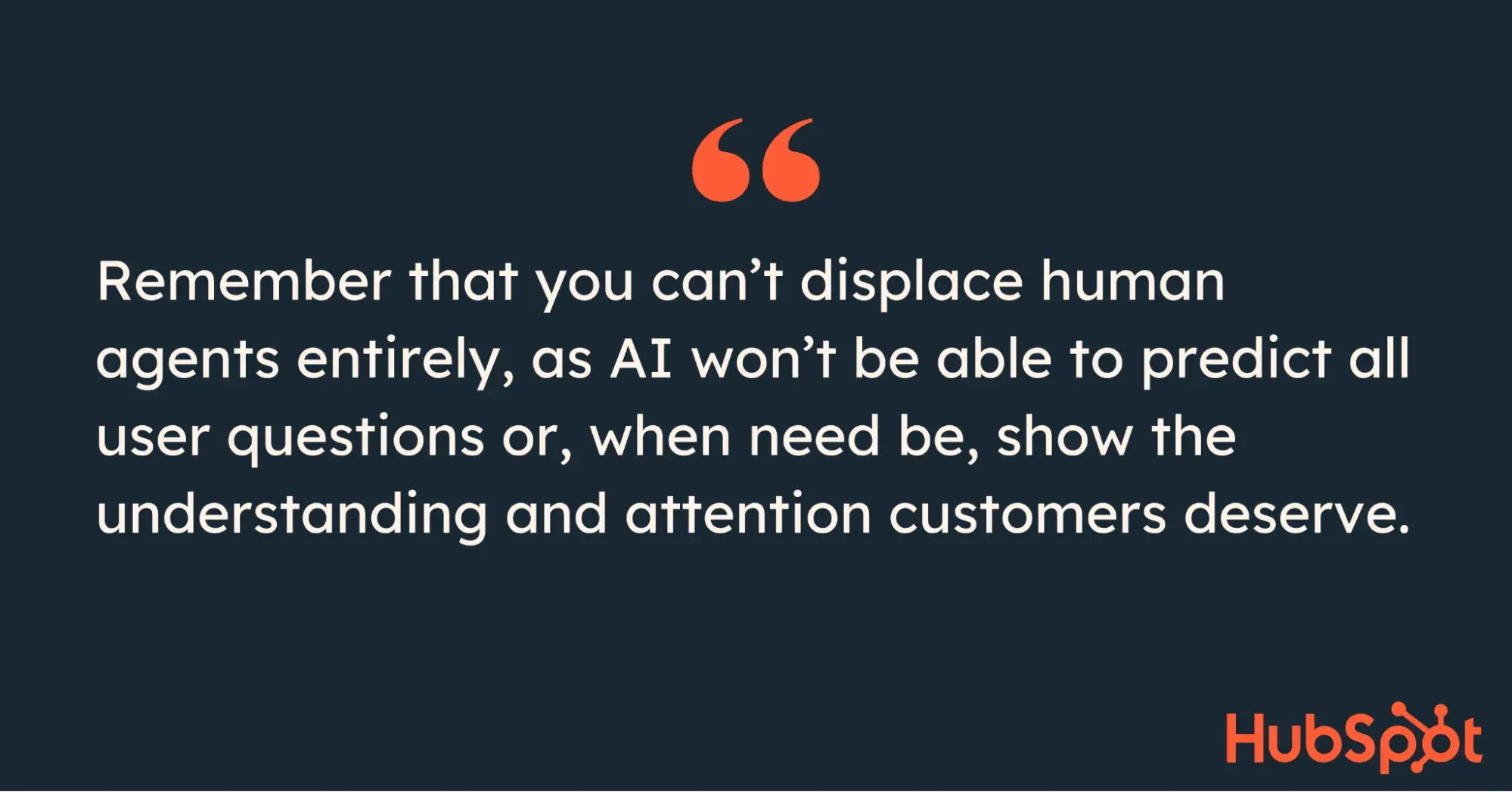That’s why, if you haven’t already, I recommend putting an emphasis on keeping your existing clients engaged and satisfied. Those who have a large volume of conversations each day might also benefit from AI-powered customer engagement methods.
Table of Contents
- Why Is Customer Engagement So Important?
- How AI Will Impact Customer Engagement
- What to Consider When Implementing AI in Customer Engagement
Why Is Customer Engagement So Important?
A lot of companies are “guilty” of prioritizing acquisition over retaining current customers. While a steady inflow of leads is important for business survival, so is making sure your clients don’t jump ship.
As a marketer and a freelancer, I know how incredibly hard it is to find new customers, especially now. That’s why I put a lot of effort into building long-lasting relationships with the brands I work with. And it comes down to much more than delivering great work, on time. It’s about managing expectations, communicating regularly, and showing empathy.
When your customers are engaged, they’re more cooperative and more likely to forgive occasional hiccups. Also, since you look after them, they’ll stay loyal, and when a new project comes up where you’re a good fit, they might pick you over competitors.
How AI Will Impact Customer Engagement
1. Personalization
I still remember when personalization was limited to basic segmentation and including a customer’s name in an email. Luckily, this is no longer the case, and we have much broader personalization options. Thanks to predictive analytics and advanced AI tools, businesses can create more precise and comprehensive experiences, which take into account individual customer behaviors and subtle preferences.
We don’t have to search far for examples — just look at Spotify. With features like Discover Weekly, which shows a curated playlist based on users’ previous selections, they take personalization to a whole new level.
Since 78% of customers expect more personalization in brand interactions than ever before, turning to AI-powered customer engagement tactics should be a no-brainer. Email templates can also be a big help to your team.
2. Customer Service Automation
Whatever memories you have of customer service chatbots before the rise of generative AI, you can now deem a tale of the past. Today’s AI-powered virtual assistants are capable of handling a wide range of client inquiries and providing personalized assistance in real time.
McKinsey has found that businesses with the highest so-called “AI-driven customer service maturity” handle over 95% of all client interactions via digital channels (and about 70-80% through self-service techniques). This has a positive impact on both customers and businesses. The former don’t have to experience long wait times to get answers to simple questions or problems while the latter can redirect their employees’ attention to those that genuinely require human participation.

3. Enhanced Customer Insights
According to HubSpot’s 2024 State of Service report, 22% of CRM leaders are struggling with understanding customer needs. AI tools can already offer a solution to this problem. They’re great at putting together information from different channels, like social media accounts, surveys, and your CRM, and painting the most accurate picture possible of each client.
It can also take note of subtle preferences directly in your product. Fang Fei, responsible for branding, marketing, and strategic partnerships at ELEHEAR, shared a great example of this.
The company, which offers intelligent hearing aid devices, uses its AI-backed customer-facing tool, VocPlus, to analyze users‘ hearing profiles and adjust the sound amplification to their needs. “By doing so, we’ve seen improved customer engagement rates, as users feel understood and catered to individually. This has not only increased end-user satisfaction but also positioned us better in the global hearing aid market,” Fei says.
On a higher level, AI can also alert you of any “concerning” behavior, like a drop in a particular customer’s visits, shortened sessions, or even a decreased average order value. This way, your customer-facing team will be able to act before this impacts the client’s relationship with the brand.
4. 24/7 Availability
HubSpot’s State of Customer Service Report has found that 82% of customers want customer service (CS) agents to resolve their issues immediately. This expectation puts immense pressure on businesses, especially those that operate globally. In the past, companies had to either employ CS agents in multiple locations or leave customer queries unanswered during off-business hours.
Now brands can use conversational AI systems to make sure customers get help anytime and anywhere. Eli Itzhaki, CEO and founder of Keyzoo, says that “AI has become a game-changer for locksmith businesses like mine. It‘s not just about efficiency anymore, it’s about completely revamping how we connect with customers.”
Itzhaki says they recently integrated an AI-powered chatbot on their website and social media platforms to handle customer inquiries and provide 24/7 support. The results were mindblowing. The chatbot handled over 1,500 customer conversations in the first month alone, with a first response time of under two seconds! This not only improved their response rate by 300% but also freed up the human customer support team to focus on more complex issues.
“Since implementing AI, we've seen a significant increase in customer satisfaction ratings — a whopping 25% boost! Our AI-powered chatbot has become an indispensable tool in our customer engagement arsenal, allowing us to provide faster, more personalized support to our customers,” he adds.
5. Emotion Recognition
I’m always amazed at how good AI tools are at detecting customers’ reactions. Initially, it came down to “just” analyzing written text and scanning it for emotional terms. But, as Derek Pankaew, founder of Listening.com, has told me, these systems are getting better every day at natural language processing.
“Anytime users connect via text, email, social media, and even voice calls, we can use AI to understand that data at scale.” When asked whether this doesn’t make customers feel isolated from the company’s human agents, Pankaew says:
“With this level of sentiment analysis, we aren’t removing the human connection from user experiences. Quite the contrary — we’re able to reach a higher level of empathetic engagement.”
He says that emotion recognition lets the entire company focus on how they can be better for their target users. This spans from spotting product improvement opportunities to marketing campaign ideas and better customer support methods.
6. Reduced Customer Effort
It’s no secret that customer experience, which is also about how easy it is to use a product or service, drives loyalty and customer engagement. The simpler and more pleasant it is, the higher the adoption. And product/service switching is common these days — no wonder, considering how many options are available.
Lucas Carval, growth specialist at Mention, says, “AI will help customers save time and think less.” To simplify the clients’ job, they’ve added multiple AI features, including:
- An AI caption & hashtag generator to speed up the creation process of social media posts.
- A sentiment analysis feature to detect the sentiment behind each brand mention.
- Alert overview to summarize brand mentions without the need to check them manually.
“All those features help our clients be more efficient in their day-to-day tasks and enable us to improve CSAT and NPS after we launch them,” says Carval.
If you’re looking for a solution that will help you deliver AI-powered customer support at scale, take a look at Service Hub. It will help you collect important customer insights and track their interactions with your brand, allowing you to personalize your customers’ experiences.
What to Consider When Implementing AI in Customer Engagement
Retain a balance between automation and the human factor.
In her piece for Forbes, Kamales Lardi — digital transformation expert and Forbes Council Member — recently said that companies must recognize AI as an enabler rather than a stand-alone solution to problems. I find this particularly true when it comes to using AI-powered customer engagement.
It can be tempting to delegate most client interactions, or even whole engagement strategies, to AI since it’s a data goldmine and does so well in various scenarios.
However, if you remove real-life employees from the picture, your brand could appear soulless, or even lose personality. Your company is your people, not the technology, so don’t remove human touch points altogether. Simply decide where they’re most needed.
Identify scenarios where automation will work well (and where it won’t).
You can start by reviewing your past customer interactions and writing down any recurring topics. Deciding which use cases should be handled fully by AI can’t be an afterthought, though. Unfortunately, it appears that some companies don’t get this categorization correct, as Michael Podolsky, co-founder and CEO of WiserBrand, told me.
“Hundreds of online reviews left across review platforms and social media showcase the inadequate functioning of AI models in customer service and that customers can't get live human help to solve consumer issues,” he says, and argues for keeping employees in the loop.
“Organizations will need to hire well-trained human agents to maintain a human touch and balance AI efficiency with human empathy.”
Remember that you can’t displace human agents entirely, as AI won’t be able to predict all user questions or, when need be, show the understanding and attention customers deserve.

Observe your customers’ interactions with AI.
I am not sure you’ve noticed, but when AI became popular, many brands choked up on it a bit and started adding “AI” to their value propositions, hoping to attract more attention.
While AI-powered features can make customers’ lives easier, it’s vital to check how users interact with them. Flooding your product with AI functionalities isn’t the way to go.
So, before adding more of them to your software, check the following:
- What’s their adoption rate?
- Do the AI-powered recommendations work, and do customers convert?
- Have they impacted your average session duration?
Observing how customers interact with your AI features will help you decide how to develop your product and where it’s best to skip AI altogether.
AI-Powered Customer Engagement Is Becoming a Standard
Customers are getting used to the convenience and personalization AI tools bring into their interactions with brands. Offering short wait times and tailored recommendations for clients is hard to handle manually if you have a large customer base. That’s why you should consider implementing AI into the processes and areas where human agents aren’t necessary.
Also, having some sort of AI functionality is now a standard for virtually any business with a digital presence. If you decide not to use it, then you need to be aware of the consequences, like being seen as less innovative than the industry standard.
That’s not to say that you need to embed AI into everything you do. It’s about deciding, as a whole organization, where it will bring the most value.
Editor's note: This post was originally published in October 2024 and has been updated for comprehensiveness.
Customer Service





.png)

-2.png)




